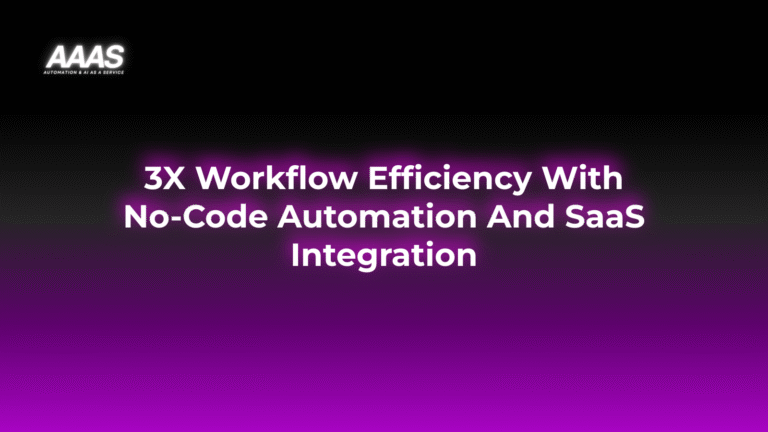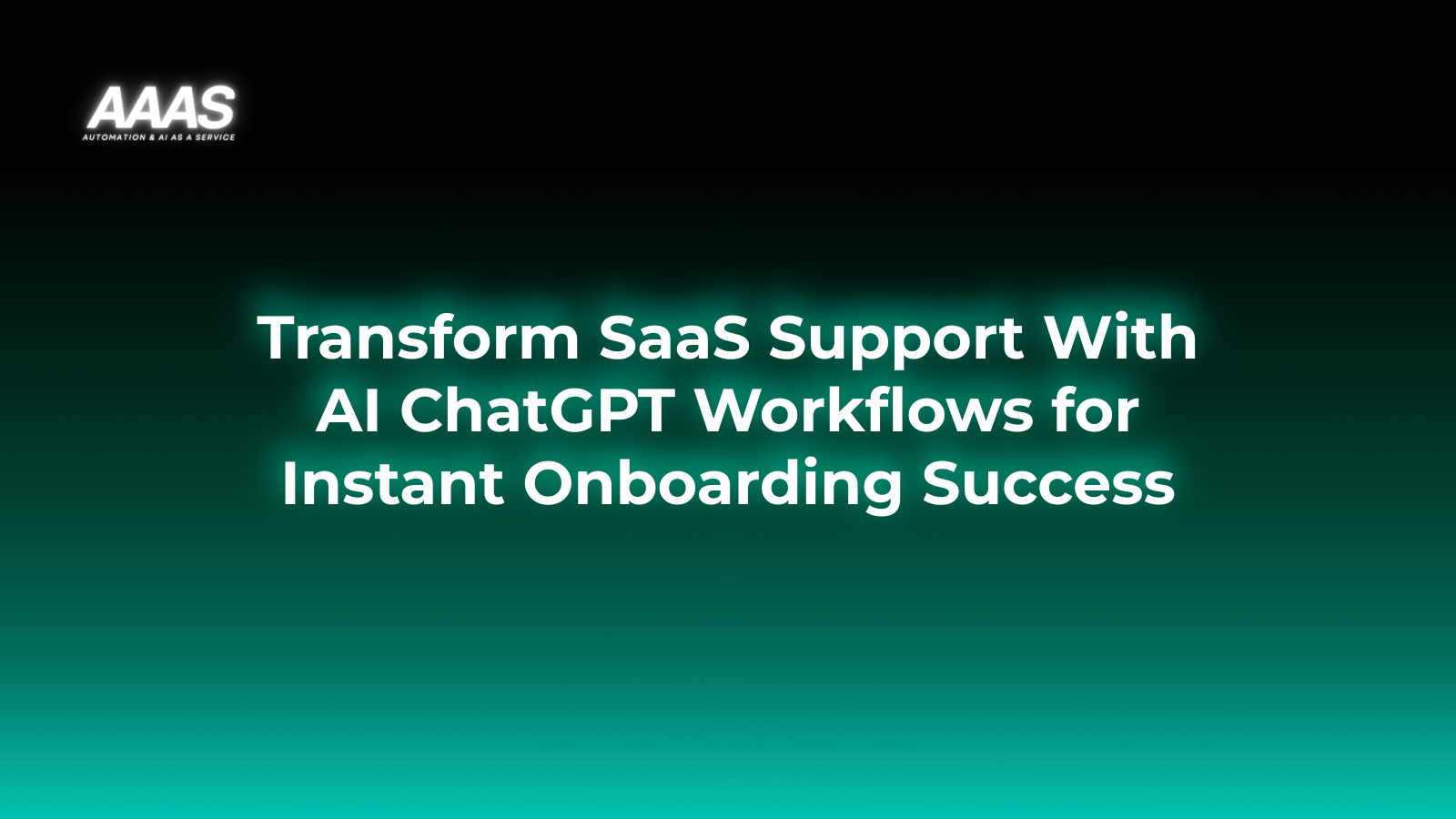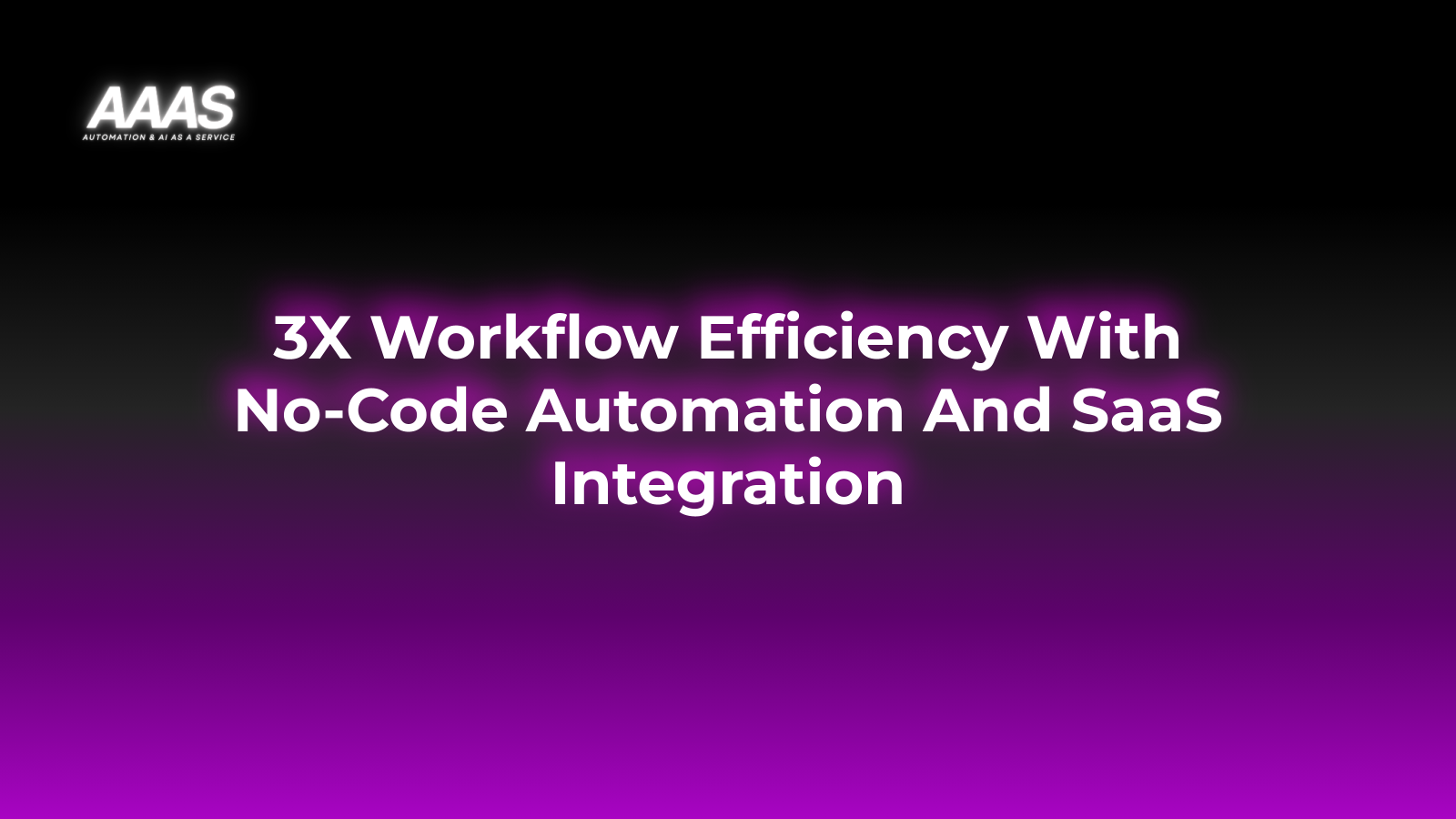Leveraging No-Code Automation and SaaS Integration for Workflow Efficiency
Market Problem: Inefficient Workflows
Many businesses struggle with:
- Manual, repetitive tasks that consume valuable time
- Fragmented software tools leading to data silos
- High costs associated with development and IT support
- Delayed processes impacting customer satisfaction and productivity

Traditional approaches to digital transformation often require significant resources, coding skills, and lengthy implementation times. This increases operational expenses and slows down innovation.
Solution & Benefits of No-Code Automation and SaaS Integration
No-code automation platforms and SaaS integration tools empower non-developers to connect apps, automate tasks, and streamline workflows—without writing a single line of code.
Key Benefits
- Enhanced Productivity: Automate repetitive processes to free up employee time for higher-value work.
- Reduced Costs: Minimize IT workload, lower human error, and cut licensing or consulting expenses.
- Faster Time-to-Value: Implement workflow changes rapidly and adapt processes as business needs evolve.
- Improved Collaboration: Centralize information and improve data accessibility across departments.
- Scalability: Extend automation across new tools and teams as your business grows.

Real Use Cases
1. Marketing Automation
Integrate Zapier or [InternalLink:marketing-automation|marketing software] to automate lead capture from web forms into your CRM, trigger email sequences, or schedule social media posts—all without manual intervention.
2. HR Onboarding Automation
Use Make (Integromat) to connect recruitment platforms to onboarding checklists in HR SaaS, automatically creating user accounts and sending resources to new hires.
3. Finance and Reporting
Sync invoices and payment data from billing software to accounting software to reduce delays and errors with tools like Workato.
4. Customer Support Ticket Routing
Route tickets from multiple channels (email, chat) into a unified help desk automatically, assign priorities, and trigger notifications with platforms like Tray.io.
Technical Details and Architecture
Core Components
- Triggers: Define events (form submissions, new files, messages) that start workflows.
- Actions: Automated steps performed in connected SaaS apps (create, update, send, notify).
- Connectors/APIs: Prebuilt integrations for popular cloud software—CRM, email, databases, etc.
- Workflow Builder: Visual drag-and-drop interface that allows business users to create and test automations.

Popular Tools
- Zapier
- Make (Integromat)
- Workato
- Tray.io
- Microsoft Power Automate
Comparison with Alternatives
| Feature | No-Code Automation | Custom Coding | Manual Processes |
|---|---|---|---|
| Implementation Time | Hours/Days | Weeks/Months | Immediate but repetitive |
| Technical Skill Needed | Low (No-code) | High (Developers) | None |
| Maintenance | Easy, visual updates | Code revisions required | Error-prone, ongoing |
| Scalability | High with SaaS connectors | High but resource intensive | Limited |
| Cost Over Time | Low/Subscription | High (Dev & infra) | High (Labor) |
Pricing Table: Leading No-Code Automation Platforms
| Platform | Free Tier | Starting Monthly Price | Key Features |
|---|---|---|---|
| Zapier | Yes | $19.99 | Thousands of integrations, Multi-step workflows, Scheduled runs |
| Make (Integromat) | Yes | $9 | Advanced automation, Scenario builder, API module |
| Power Automate | Yes | $15 | Microsoft 365 integration, AI builder, Desktop automation |
| Workato | Demo only | Custom Quote | Enterprise-grade automation, Advanced security, Conditional logic |
ROI-Focused Practical Examples
Example 1: Automated Invoice Processing
- Before: Manual invoice entry took 60 min/day ($15/hr wage = $375/month).
- After: Automated workflow with Zapier ($19.99/month).
- ROI: 90% time saved, over $350/month reduction in labor cost.
Example 2: Lead Management Automation
- Before: Sales reps manually logged and assigned leads. Regular errors and delays.
- After: Automatic lead routing reduces lag, speeds up response by 30%.
- ROI: Faster sales cycle directly correlates with increased revenue.
Example 3: Employee Onboarding Automation
- Before: HR spent 2 hours per new hire onboarding tasks.
- After: Automated document collection and setup. Time cut to 30 minutes.
- ROI: Enhanced HR productivity, improved onboarding experience.
Setup Steps: Deploying No-Code Automation
- Identify Repetitive Workflows: Audit business processes for automation opportunities.
- Select a Platform: Compare tools (Zapier, Make, Power Automate) based on your tech stack.
- Map Data Flow: List required SaaS apps and define data entry/exit points.
- Build Triggers and Actions: Use the visual workflow designer to create automation logic.
- Test: Use test data to validate automation and prevent data errors.
- Deploy: Activate live automations. Monitor run history for improvements.
- Iterate: Gather feedback and optimize workflows for better efficiency.
Pros and Cons
| Pros | Cons |
|---|---|
|
|
Expert Tips for Maximum Workflow Efficiency
- Start with one high-impact process for a quick win before scaling automations.
- Regularly review and update automated workflows for changing business needs.
- Invest in user training to empower all teams, not just IT.
- Maintain proper documentation of all workflows for transparency and onboarding.
- Monitor automation metrics and avoid over-automation that can create operational blind spots.
FAQ
Is no-code automation secure?
Leading platforms offer robust security including OAuth, encryption in transit, audit logging, and user access controls. Review your vendor’s certifications and compliance standards.
What apps can I integrate?
No-code platforms usually support hundreds to thousands of SaaS tools, including CRM, ERP, email, marketing, file storage, and more.
Do I need IT involvement?
Business users can build most workflows independently, though IT should approve permissions and oversee data security for sensitive processes.
How much can I save?
Savings depend on the manual time eliminated and workflow volume. Most organizations see positive ROI within the first months.
Can these automations scale?
Yes, most no-code SaaS platforms support extensive workflows, branching logic, and large data volumes suitable for scale-ups and enterprises.
References and Citations
Last Updated
2025-11-13T09:00:30.722Z








